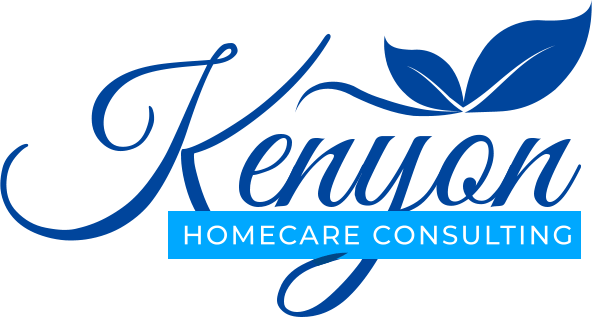We hear a lot about “quality of care” in home care, home health and hospice, but seldom is it defined in terms that allow us to quantify what it really means or what it looks like. “Quality” is both objective and subjective. One method of measuring quality is by outcomes, yet even those have subjective elements. So, how do we determine quality? What are the solid elements that will tell us we have quality?
Simply defined, quality is what our home health, home care and hospice customers and payors tell us it is. Expectations drive the quality issue. Since expectations can be broad based on who is defining them, how do we set a list of quality indicators that meet the customer’s expectations? Indicators we can measure.
It is fair to say, because we are in the caregiving business, the first expectation of our customers is that our home care caregivers will care about them and their issues. That sounds pretty simple – until you define what caring looks like and how you’ll measure it. One measurable criteria is following the care plan. Is it being completed as designed? For home care, care plans are developed around the client’s wishes for care. If it is not being followed, we need to know why. It is also regulation that aides follow the plan of care.
Another element of measurable criteria for the care plan is the frequency with which the aide has identified needed changes to the plan and notified the supervisor that the client’s needs have changed. For clinical staff, the frequency of care plan updates and changes are also a clue to engagement and the quality of the care being provided. When the plan of care is not being followed, and there are no updates or changes to the care, it may be an indication that the caregivers are not engaged with the client/patient or are not “tuned in” to the needs and wishes of the client/patient. While this is still a subjective measure, it can be used as an indicator of caring.
A second big issue for customers that relates directly to quality of care is the knowledge of the caregivers and their use of knowledge. Outcome measures, depending on how they are applied, can be a good indicator of expertise and skill in caring. For example, your private duty agency may expect aides to monitor the client’s blood sugar values and report when the values fall outside the range established by the clinician. The aide needs to be taught about blood values, including how to read the monitors and determine if the reading is within or outside the established range. Additionally, the aides need to be taught the presenting symptoms of high and low blood sugar and what to do for the client in each case.
Whatever parameters you set to measure knowledge, they must be indicative of the diseases and disabilities common in the client case load and should be reflected in the ongoing in-service training program for the agency.
With competition becoming increasingly fierce, now more than ever, the agencies that win will be those perceived by their customers as caring and knowledgeable. So, while we all know how to track the agency’s financials and regulatory requirements, you also want to add quality indicators of caring and knowledge to the dashboard.
If you are struggling with trying to figure out how to increase the business of your agency and need some help identifying and applying quality indicators to your agency, Contact us. We’re happy to help. We hear a lot about “quality of care” in home care, home health and hospice, but seldom is it defined in terms that allow us to quantify what it really means or what it looks like. “Quality” is both objective and subjective. One method of measuring quality is by outcomes, yet even those have subjective elements. So, how do we determine quality? What are the solid elements that will tell us we have quality?
Simply defined, quality is what our home health, home care and hospice customers and payors tell us it is. Expectations drive the quality issue. Since expectations can be broad based on who is defining them, how do we set a list of quality indicators that meet the customer’s expectations? Indicators we can measure.
It is fair to say, because we are in the caregiving business, the first expectation of our customers is that our home care caregivers will care about them and their issues. That sounds pretty simple – until you define what caring looks like and how you’ll measure it. One measurable criteria is following the care plan. Is it being completed as designed? For home care, care plans are developed around the client’s wishes for care. If it is not being followed, we need to know why. It is also regulation that aides follow the plan of care.
Another element of measurable criteria for the care plan is the frequency with which the aide has identified needed changes to the plan and notified the supervisor that the client’s needs have changed. For clinical staff, the frequency of care plan updates and changes are also a clue to engagement and the quality of the care being provided. When the plan of care is not being followed, and there are no updates or changes to the care, it may be an indication that the caregivers are not engaged with the client/patient or are not “tuned in” to the needs and wishes of the client/patient. While this is still a subjective measure, it can be used as an indicator of caring.
A second big issue for customers that relates directly to quality of care is the knowledge of the caregivers and their use of knowledge. Outcome measures, depending on how they are applied, can be a good indicator of expertise and skill in caring. For example, your private duty agency may expect aides to monitor the client’s blood sugar values and report when the values fall outside the range established by the clinician. The aide needs to be taught about blood values, including how to read the monitors and determine if the reading is within or outside the established range. Additionally, the aides need to be taught the presenting symptoms of high and low blood sugar and what to do for the client in each case.
Whatever parameters you set to measure knowledge, they must be indicative of the diseases and disabilities common in the client case load and should be reflected in the ongoing in-service training program for the agency.
With competition becoming increasingly fierce, now more than ever, the agencies that win will be those perceived by their customers as caring and knowledgeable. So, while we all know how to track the agency’s financials and regulatory requirements, you also want to add quality indicators of caring and knowledge to the dashboard.
If you are struggling with trying to figure out how to increase the business of your agency and need some help identifying and applying quality indicators to your agency, Contact us. We’re happy to help.










